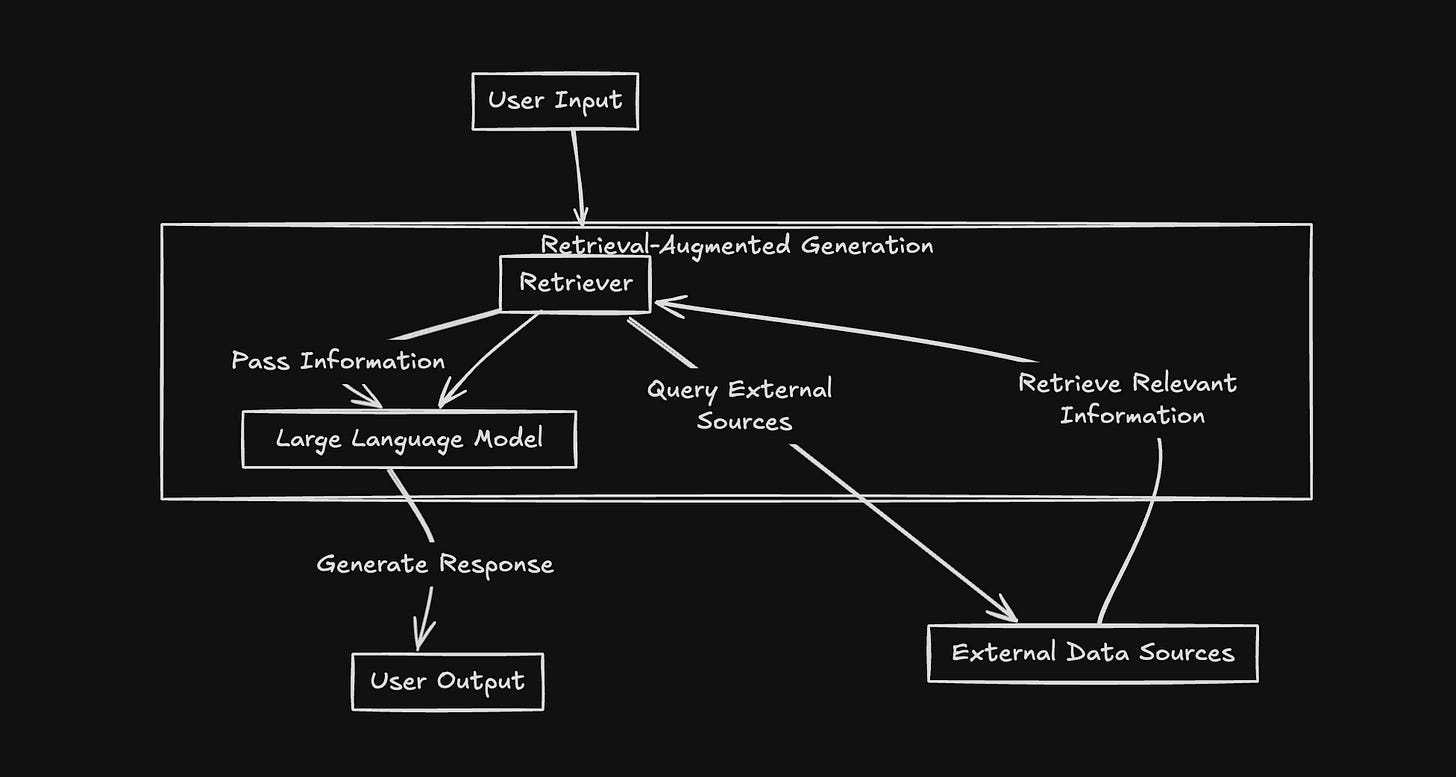What is Retrieval-Augmented Generation (RAG)?
The Simplest Guide to Understand Retrieval-Augmented Generation
Hello folks, I hope you’re doing well and solving good problems, because, of course, you’re an awesome engineer and a proud subscriber of Dev Buddy Weekly! 😄
Today, I want to talk about something that’s making AI even smarter and more useful Retrieval-Augmented Generation, or RAG for short. If you’ve been curious about how AI can provide more accurate and up-to-date answers, this post is for you.
In recent years, AI models like GPT-4 have become super popular for generating text that sounds human-like. These models are called Large Language Models (LLMs), and they’re great for writing articles, answering questions, and even creating stories. But, they have some limits. we’ll talk about how Retrieval-Augmented Generation (RAG) makes these models even better.
Why Do Large Language Models (LLMs) Have Limits?
Even though LLMs are incredibly smart, they still have some challenges
1. Old Information
LLMs only know what they were trained on. They don’t know about anything that happened after their training, so they can miss out on the latest news or facts.
2. Limited Memory
If you have a long conversation or ask many questions, LLMs can forget the earlier part of the conversation because they can only hold so much information at once.
3. Guessing Sometimes
Sometimes, LLMs don’t know the answer but will make something up that sounds believable. This is called hallucination and it’s a big problem if you need correct information.
What is Retrieval-Augmented Generation (RAG)?
RAG helps solve these issues by allowing the AI model to look up information before giving you an answer. Here’s how it works
Step 1: Find Information
When you ask a question, instead of only relying on what the model already knows, RAG searches for extra information from the web, databases, or other sources.
Step 2: Combine
After finding relevant information, RAG gives it to the AI model, which combines it with its own knowledge to come up with a response.
Step 3: Generate Answer
The AI then uses both the information it found and what it already knows to create a more accurate and up-to-date answer.
How Does RAG Help?
Here are some of the ways RAG improves how AI models work
1. Stays Up-to-Date
RAG can look for real-time information from live sources, which means it can answer questions based on current facts.
2. Fewer Mistakes
Since RAG finds real facts from external sources, it reduces the chances of the AI making up wrong information.
3. Handles Specific Topics
If the AI needs to answer a question about a specific subject (like medicine or law), RAG can find data from trusted sources in that field, making the answers much more reliable.
In short, Retrieval-Augmented Generation (RAG) makes AI models smarter and more reliable by letting them find and use real-time information before answering. This makes it a fantastic tool for anything that needs up-to-date or factual information, like research, customer service, or learning new things.
RAG is an exciting development, and it shows how AI can continue to get better at understanding and helping us in more useful ways.
Thanks for reading till the end! I’ll see you next week with another interesting topic. Until then, happy learning!




